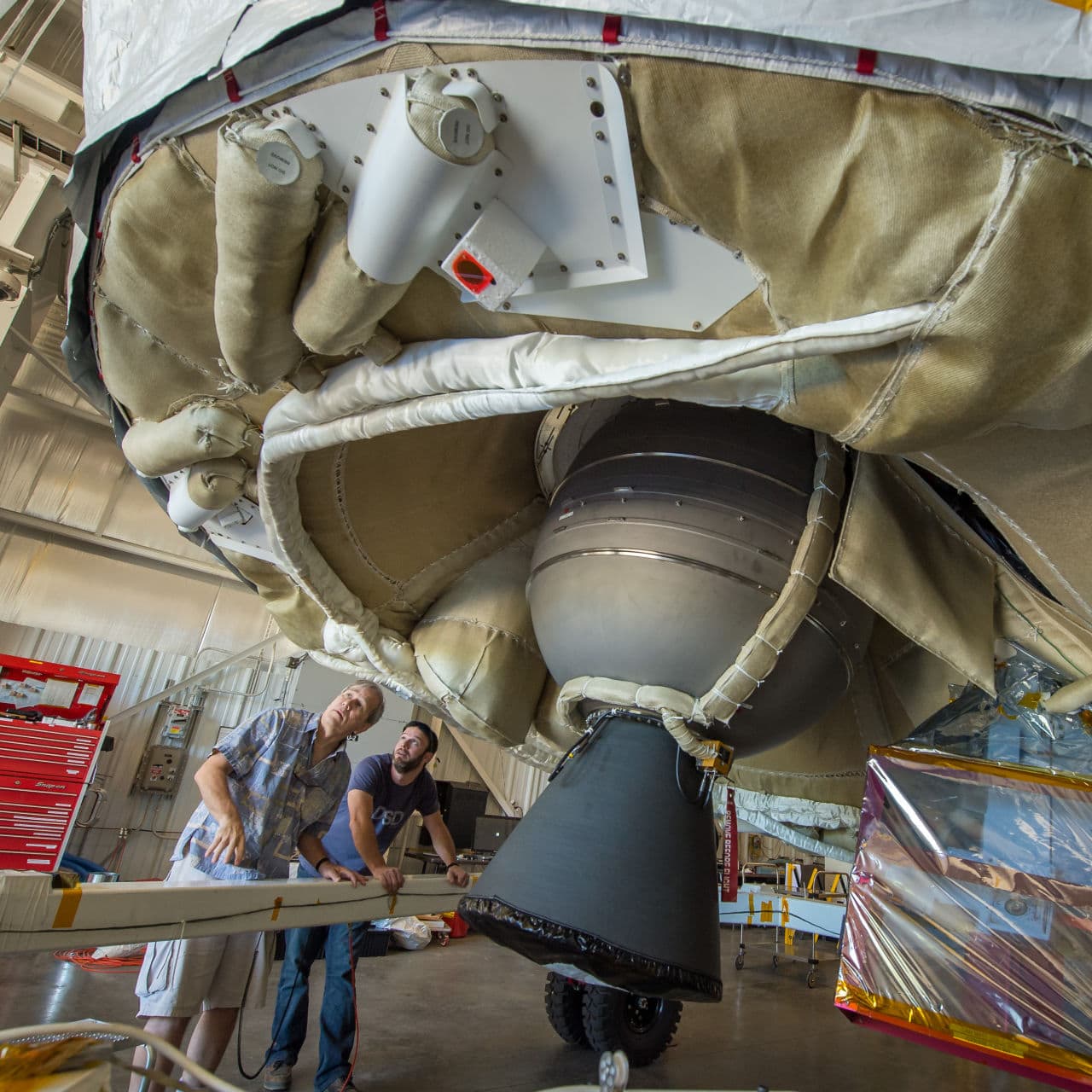Advertisement
NASA's 'Flying Saucer' Launch Postponed Due To Weather
Resume
The launch of NASA's Low-Density Supersonic Decelerator (LDSD) has been delayed for the fourth time due to unstable weather conditions. The LDSD is the largest supersonic parachute ever flown and, when deployed, is designed to slow space vehicles as they prepare to land on Mars.
This mission is NASA's second of three LDSD flight tests, all devised to test landing technologies for future Mars projects. Last year's mission tested an air brake that deployed during the flight.
Mark Adler is project manager for LDSD at NASA's Jet Propulsion Laboratory. He joined Here & Now's Jeremy Hobson from the launching facility at the U.S. Navy's Pacific Missile Range Facility in Kauai, Hawaii, to discuss the mission.
Interview Highlights
Why the decelerator technology needs improvement
"These technologies that we're developing right now would first be used to land larger payloads on Mars than what we're currently able to do. We just landed a couple years ago the Curiosity rover on Mars. That was about one ton, about 2,000 pounds, and that is the largest thing we've ever landed on Mars, and it was the largest thing we're currently capable of landing on Mars with the decelerators that we have."
Why the decelerator tests are important to a future Mars mission
"We want to step up from the one ton that we have now up to two tons to three tons on the surface of Mars. So these are actually just the first steps leading to human missions, because for human missions, we're going to need to put down 15 tons or 20 tons or more on the surface of Mars to put down a habitat or a return vehicle for humans to come back in. And so we're just now in what I might call the second step in a 12-step program to get the technologies up in line to get people to Mars."
When the technology would be used on a human mission to Mars
"These technologies that we're developing right now would first be used to land larger payloads on Mars than what we're currently able to do."
Mark Adler
"NASA's now talking about the late 2030s as a target time frame. There are no specific plans for exactly what the missions will be at that time, because we are still now developing technologies, not just these decelerator technologies, but space propulsion technologies, life support technologies, all kinds of things that are necessary to support a human flight to Mars."
Why NASA chose Kauai over Australia for the launch
"In order to launch this balloon, we need very specific weather conditions. And so we searched launch sites all over the world, in the United States, outside of the United States, and we only found really two places on the planet where we could try and do this effectively and have the right wind conditions both for good launch conditions at the surface and for good, solid winds that would take us away from populated areas, because we couldn't fly this thing over population.
And so those two places were Maralinga in Australia - it was a very large, empty test range that in fact was used for nuclear weapons testing in the '60s - and the Pacific Missile Range Facility on the west end of Kauai. And the Maralinga, Australia range would be much more expensive to operate at because there is nothing there, literally nothing at all. You'd have to drive 200 or 300 miles to get to the nearest gasoline or beer."
Guest
- Mark Adler, project manager for LDSD at NASA's Jet Propulsion Laboratory.
This segment aired on June 5, 2015.